Fizz, Fish and Fire with Roger Jones
Issue 11 | Spring 2023
One of the most common mistakes consumers make is to categorise Cava and Prosecco in the same ice bucket.
The traditional method of making a bottle of fizz involves creating a still wine and then bottling it with yeast and sugar, which form bubbles when left to ferment.
Champagne, English Sparkling and Cava are made in this way, while Prosecco uses the tank method.
Adding yeast means time is needed for the flavours to evolve. Champagne takes a minimum of 15 months to produce the best flavours and aromas, while Cava can be made from nine months, but often much longer.
The tank method used by Prosecco is a much more economical and simpler process, with everything processed in a tank, with this process taking from less than six weeks to six months.
Prosecco is made from one grape variety – Glera. It is a white variety of Slovenian origin, which was brought to the Italian village of Prosecco. Prior to 2009 the grape was called Prosecco, but EEC rules forced the name change to protect the wine’s status.
The Glera grape has little complexity or flavour, hence the addition of sugar resulting in a sweeter style sparkling.
The key, besides the quality of the grapes, is time, which is then reflected in the cost and style.
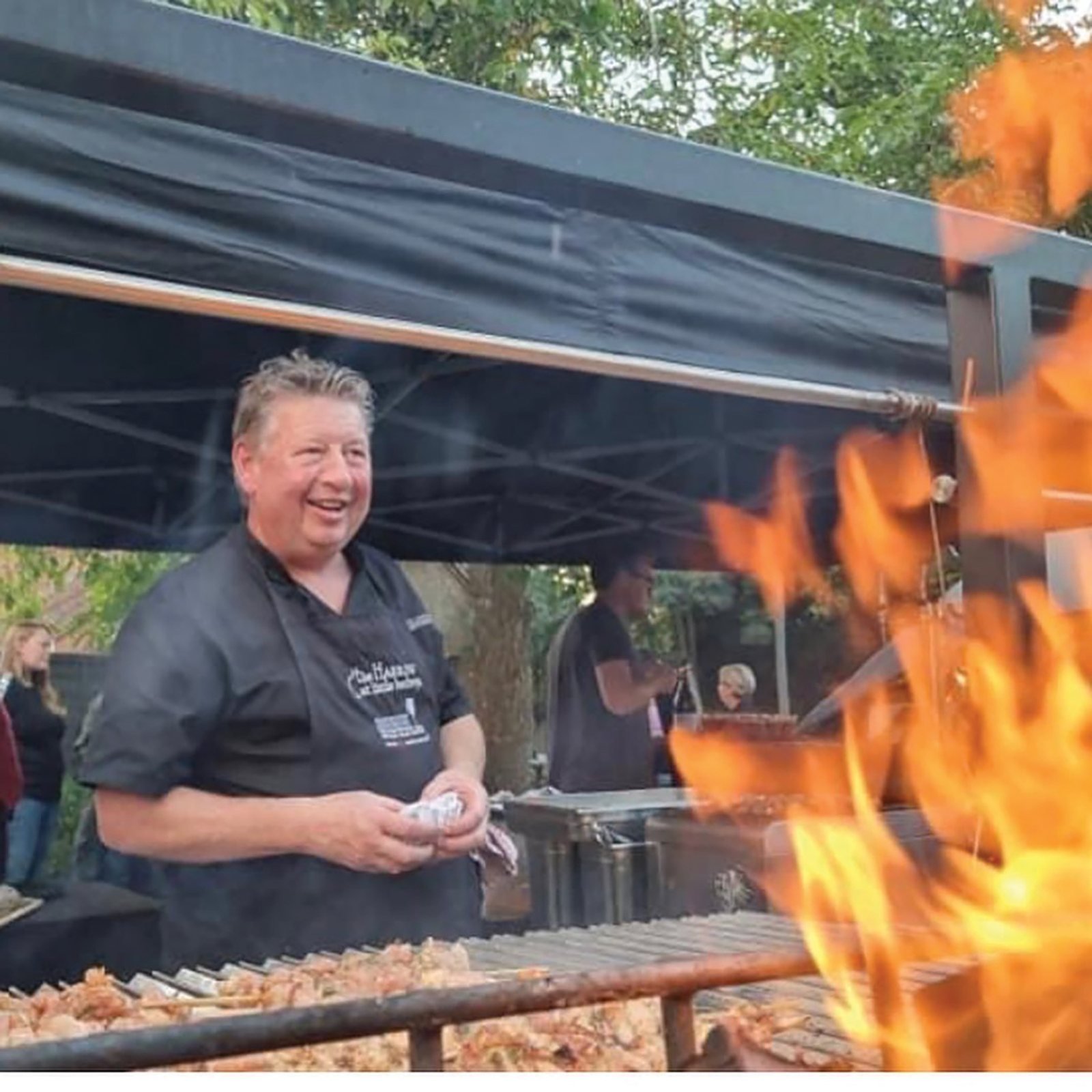
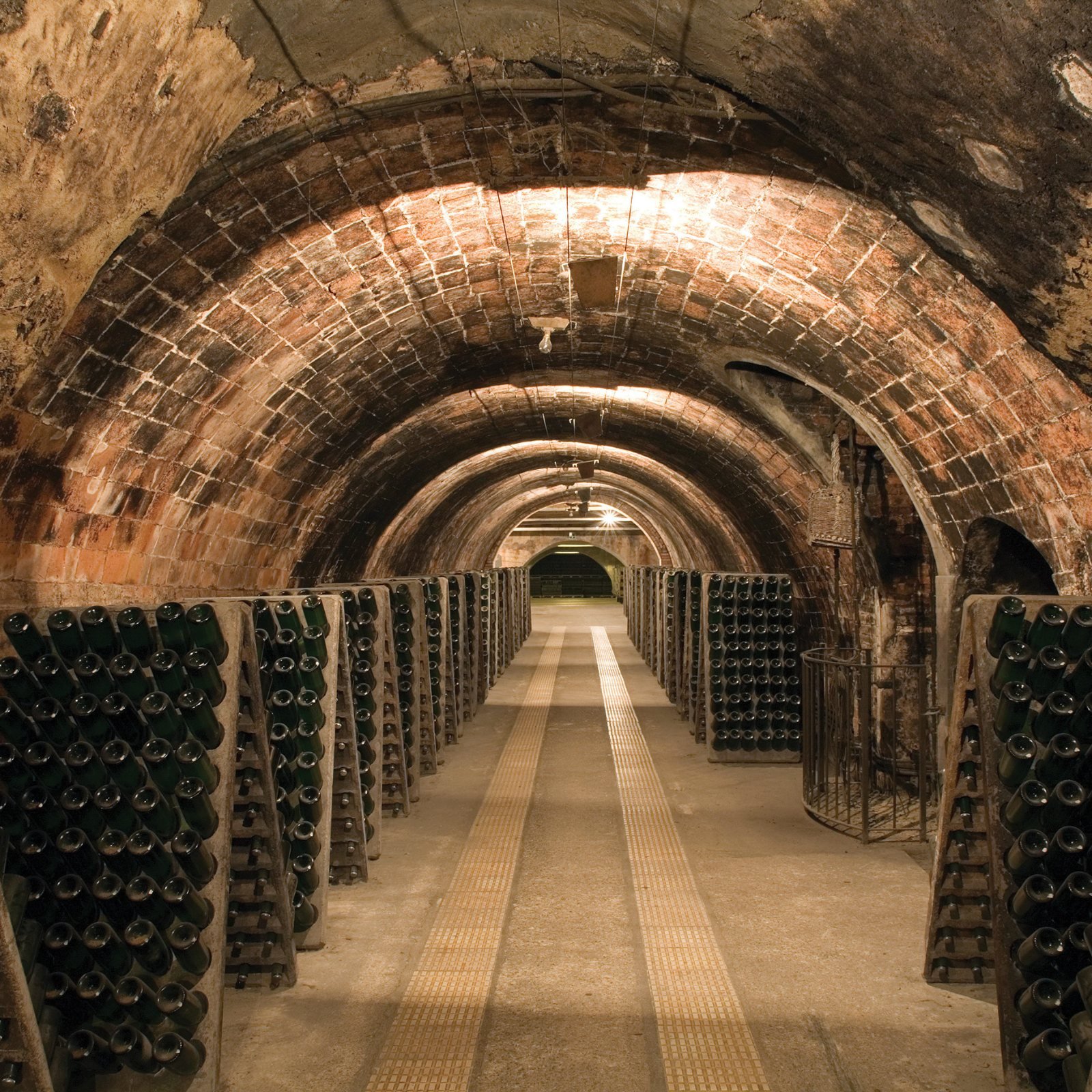
Cava is aged from nine months to over 48 months (for Gran Reserva), or even over 100 months for special releases.
Cava uses not only traditional Champagne grapes such as Chardonnay and Pinot Noir, but local Spanish varieties, which make up the majority of the production. The main ones are Macabeo (providing fruit), Xarel-lo (strength and body) and Parellada (softness and aroma).
95% of Cava comes from the Penedès region of Catalonia, about an hour’s drive from Barcelona. However, not everything has been ‘sparkling’ for Cava growers.
Firstly the EEC upset them with regulations when Spain joined the Common Market in 1986 and more recently the setting up of clubs by the small growers seeking to highlight their quality against the big two giants Freixenet and Codorniu.
The latest club, set up in 2018, is Corpinnat, consisting of 11 members. Rules to join this club include certified organic grapes and historical varieties, manual harvest and 100% vinified on the premises, with minimum ageing of 18 months.
This naturally means that certain great Cava producers are excluded, for example, for using Chardonnay, but it is definitely a way forward to highlight the quality coming from Sparkling wine in Penedès.
So what can we expect from Cava? It is made in the exact way as Champagne or English sparkling wine and will offer you excellent quality and value. You can spend more, just like with Champagne, and rest assured these are quite superb, but I would suggest to start with you look at something like Pere Ventura at £8.99 and Juve & Camps at under £15.
Cava will be dry, not sweet like Prosecco. Cost is, of course, a reflection of quality but spending between £9 and £15 offers great value. Cava in this price range should reflect cheaper Champagne brands.
Pere Ventura Reserva Non Vintage is fresh, clean and easy drinking, with toasty brioche with fresh apple, and great value at £8.99 in Waitrose. The range includes the excellent Pere Ventura, Vintage Brut, 2012.
Juve y Camps, Brut Nature Gran Reserva, 2017 is made from free run juice, with 55% Xarel-lo, 35% Macabeo and 10% Parellada. This is fresh and clean on first taste; then the golden wine evolves with some toasty brioche, stone fruit and fresh citrus.
This has been aged on average for three years giving it great complexity, with a perfect alcohol level of 12%. Priced at £14.99 at Majestic makes it one of the best value aged vintage sparkling wines in the UK.
Juve y Camps, La Siberia Gran Reserva Rose, 2012 is at the other end of the price range and available at Harvey Nichols at £160 a bottle. This 100% Pinot Noir is named La Siberia because of the cold climate the vines are grown in, which ripen very slowly, producing an incredible quality wine that has aged on lees for about 80 months.
There are tangerine, fresh bakery notes, hints of mineral and barbecue smoke, freshened with dark raspberries, cherries, frais de bois, rosebuds and a scent of pure joy. The packaging looks not dissimilar to Dom Perignon and very much in the same class.
Gramona Imperial, Corpinnat, Brut 2017 is of the exclusive Corpinnat group. This Cava has had 15 months on lees and is full of clean precise stone fruit, nectarines and peaches, savoury and spiced – a very elegant style for just over £20 a bottle. The range goes right up to the incredible Celler Batlle Brut 2010, which has been aged for 108 months and will set you back over £100.
In terms of food pairings, paella is of course a classic Spanish dish we know and love and its contents vary dependent on the region or closeness to the sea. This gives you the opportunity to expand your culinary skills and impress your guests. To most people paella is based on seafood, but it can equally work as vegetarian, meat only, or a combination of all three.
Some basic cooking tips are to use either paella or Arborio rice. Add plenty of juicy ingredients, so chicken should be skinless thighs; use cooking chorizo – with spice – picante, red onions, sweet pointed red peppers, good quality paprika, extra virgin olive oil. In a variation from normal mussels, look to monkfish (on the cartilage), shelled raw frozen prawns, langoustines and clams. The best liquid to add is Big Tom tomato juice or a quality supermarket tomato and basil sauce.
Paella pans are inexpensive with lots of good value ones online. The secret is in keeping the heat monitored.
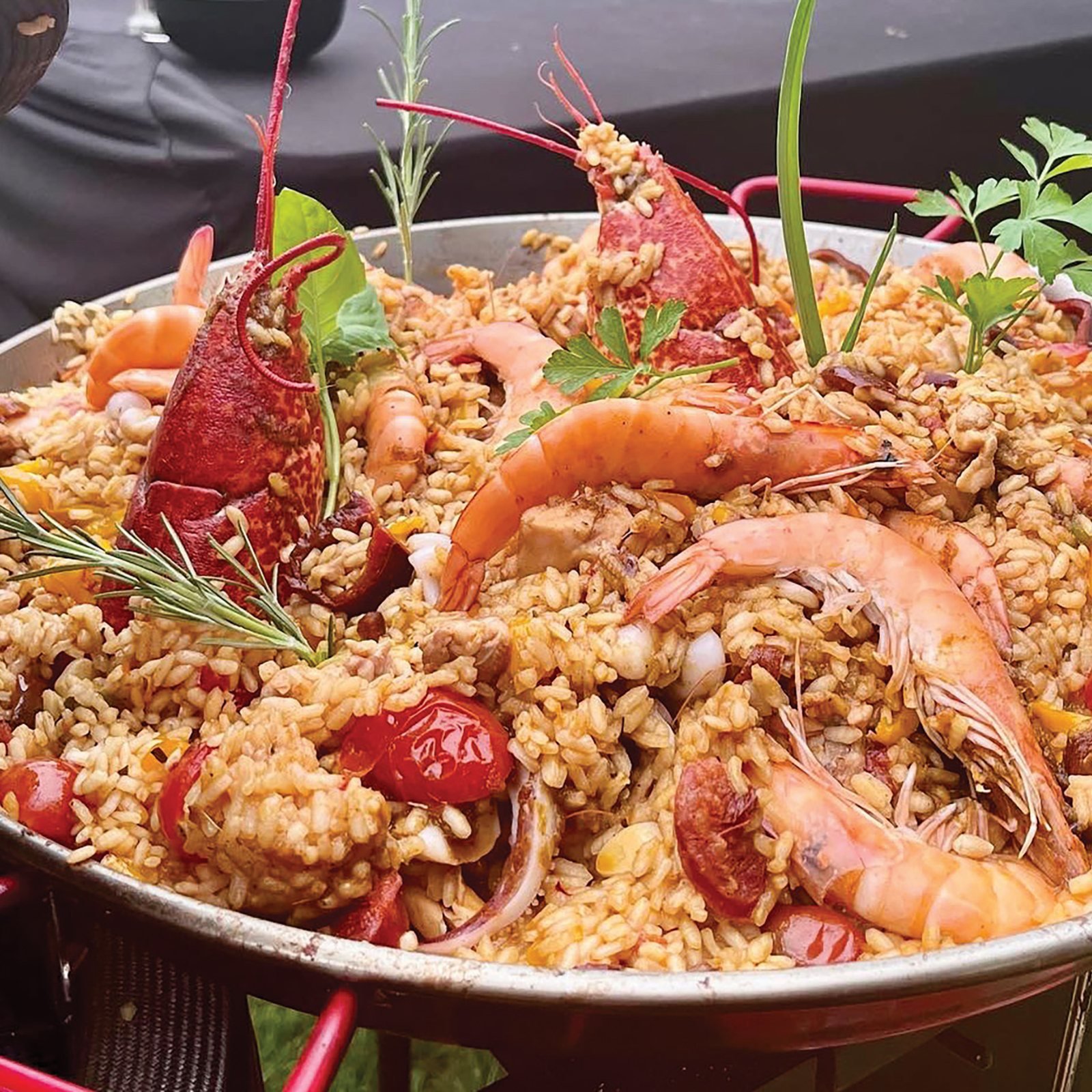
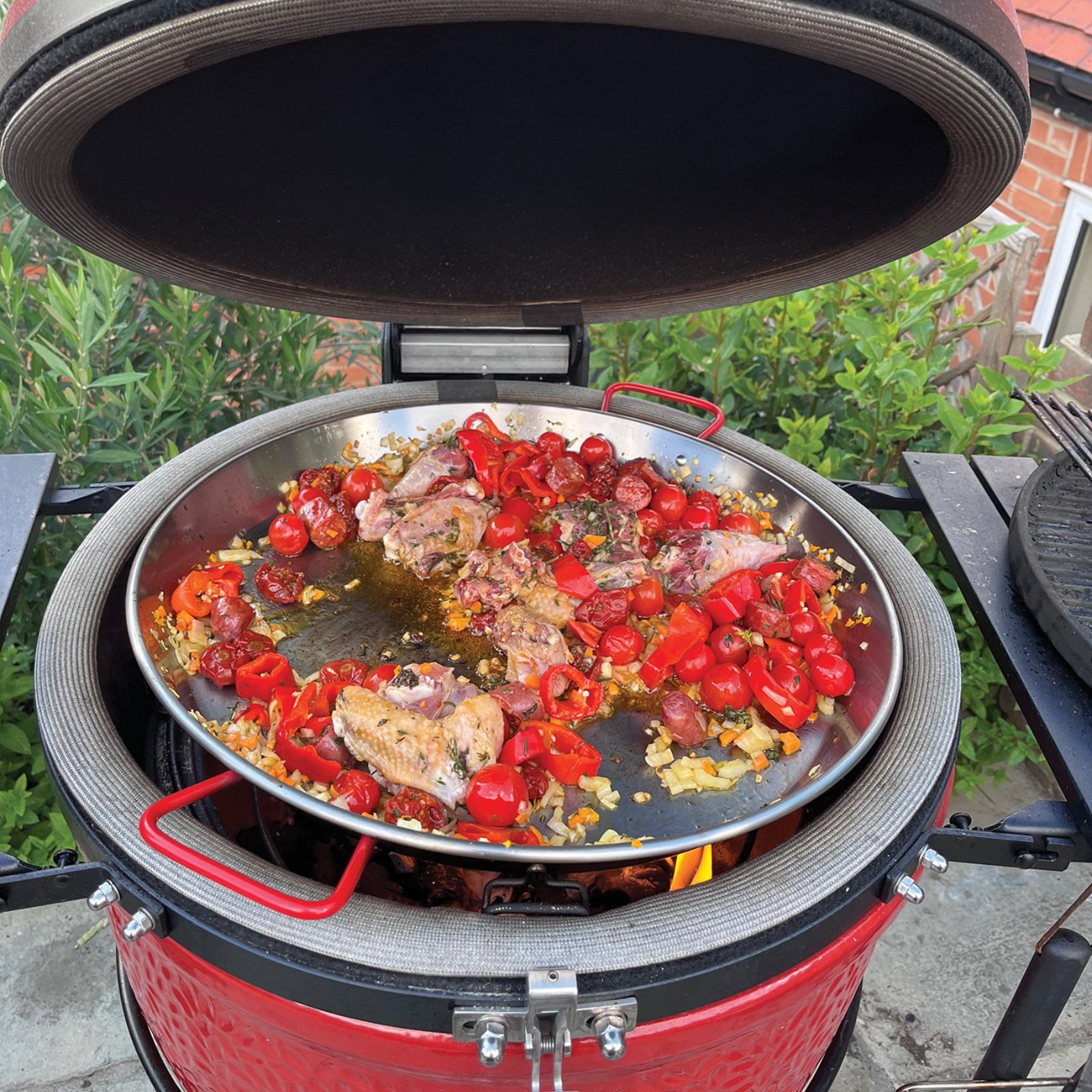
Fish is a fine match for Cava. Be it small sardines, sea bream or sea bass, these oily fish are lovely dipped in olive oil and salt prior to grilling. A touch of charcoal burn is fine on the skin, while a splash of lemon juice will refresh it.

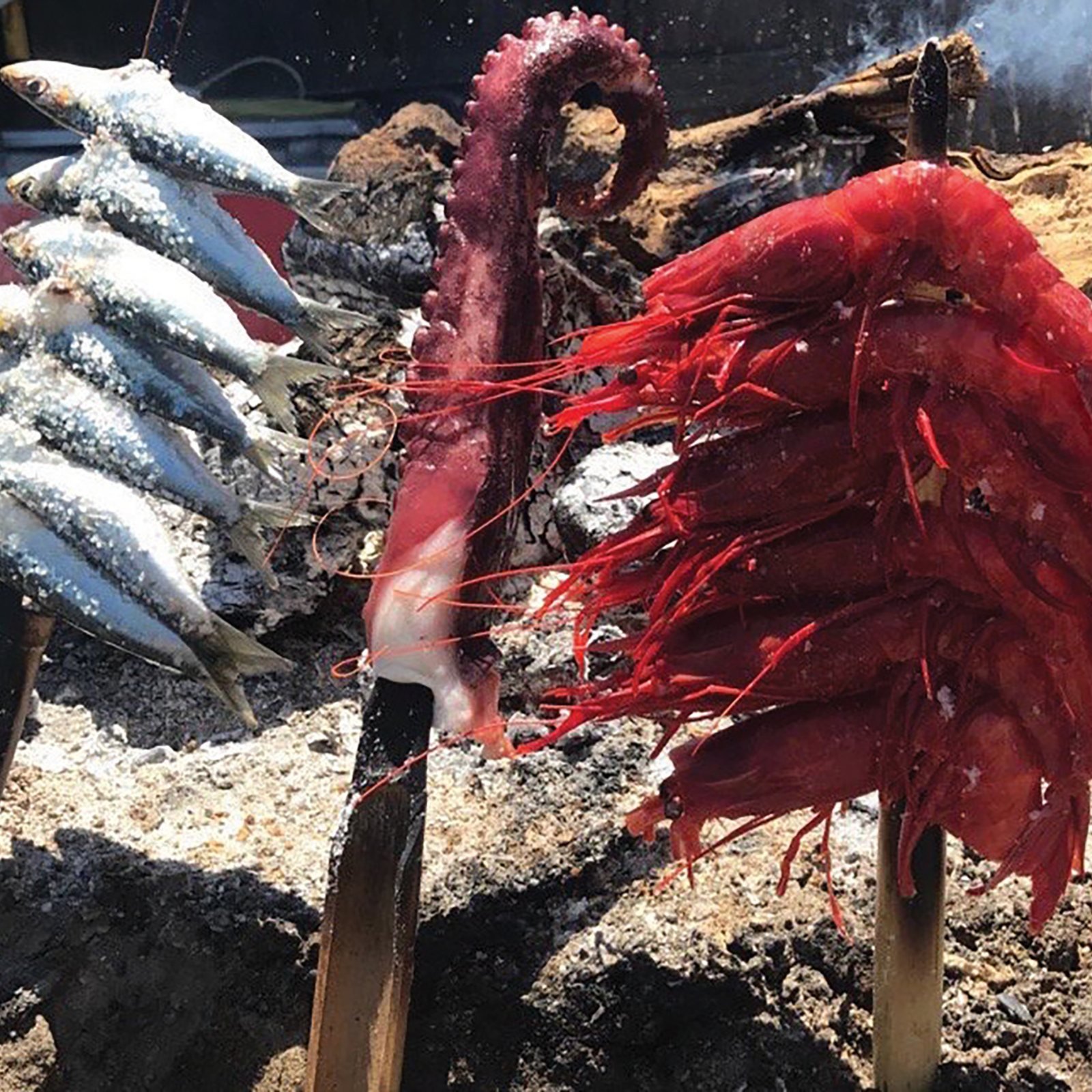
The big new food pairing for Cava is Japanese, especially sushi. So if you are starting off your BBQ with some nibbles, either order some sushi in, or make up a few simple bites to go with your Cava.
Fizz, fish and fire – the perfect combination.




